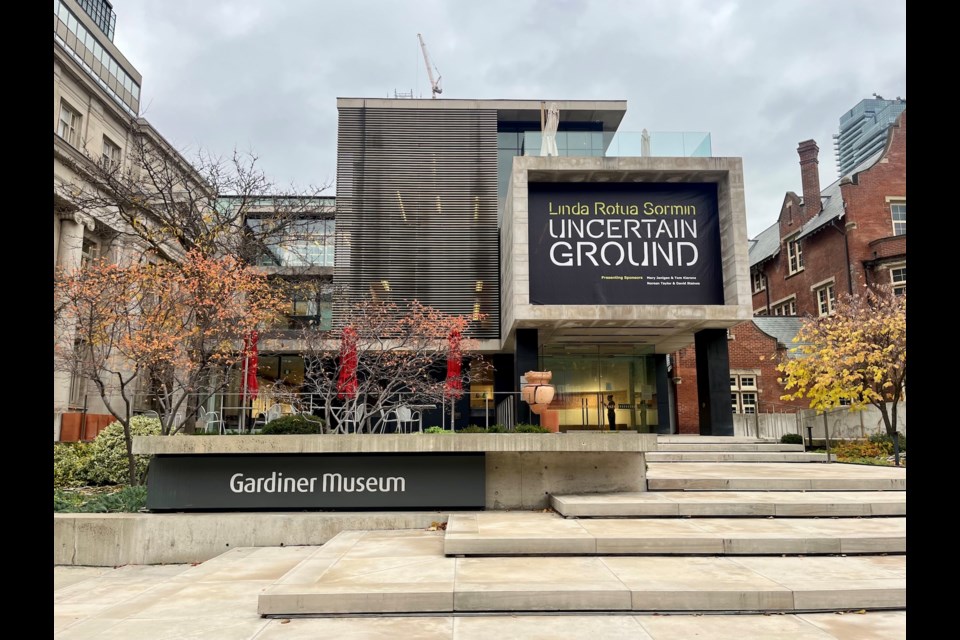Toronto — After an extensive $15.5-million renovation, Toronto’s Gardiner Museum has officially reopened its ground floor, unveiling a brighter, more accessible space centered around Indigenous art and community engagement. To celebrate, the museum will offer free admission on November 8 and 9, featuring curator-led tours, hands-on clay workshops, and live performances.
The year-and-a-half-long renovation marks a transformative moment for the museum, both architecturally and culturally. The redesigned ground floor — described as “a glass house where art is displayed at every turn” — replaces walled-off galleries with an open layout that allows visitors to explore exhibits in any direction.
At the heart of this new design is “Indigenous Immemorial,” the museum’s first permanent collection of Indigenous ceramics, housed in a striking dark structure conceived by Indigenous architect Chris Cornelius. The installation anchors the gallery and invites visitors to reflect on the temporal depth of Indigenous connections to land and tradition.
“We’ve opened the space to allow visitors to flow freely through the collection,” said Senior Curator Karine Tsoumis. “It’s a much more organic and inclusive way of experiencing this space.”
Complementing this renewed focus, the museum appointed Anishinaabe curator Franchesca Hebert-Spence as its first curator of Indigenous ceramics. A member of Sagkeeng First Nation, Hebert-Spence aims to “integrate decolonial methodologies” and make the museum more welcoming to underrepresented communities.
The renovation also introduces a community learning centre, designed to host over 200 school groups annually, and a new makerspace visible through glass walls, where visitors can participate in ceramic workshops or observe artists at work.
From the entrance, guests are greeted by a commissioned installation by Montreal artist Nadia Myre, composed of clay pipe stems and ceramic beads recovered from the River Thames, symbolically evoking the Canadian Shield.
On the museum’s third floor, the reopening coincides with “Uncertain Ground,” a monumental solo exhibition by artist Linda Rotua, open until April 2026. The immersive, multi-sensory installation spans floor to ceiling, exploring the intersections of land, memory, and transformation.
“It’s fitting that Rotua’s bold and deeply resonant work debuts as we mark the reopening of our transformed ground floor, signalling a dynamic new chapter for the museum,” said Sequoia Miller, Chief Curator and Deputy Director.
Located at 111 Queen’s Park, the Gardiner Museum remains open seven days a week. The newly redesigned ground floor and programming reaffirm the museum’s commitment to Indigenous voices, education, and community-centered art.

